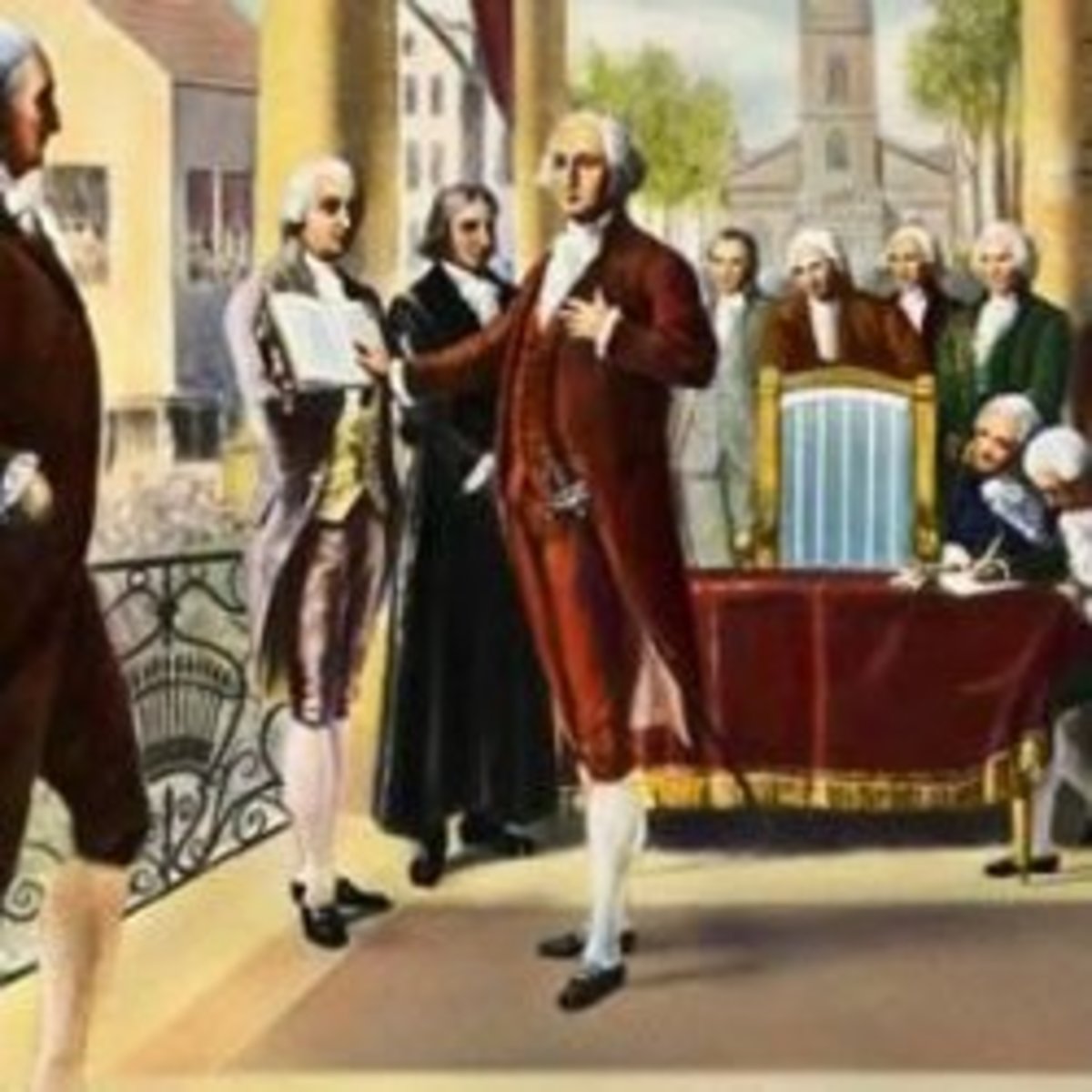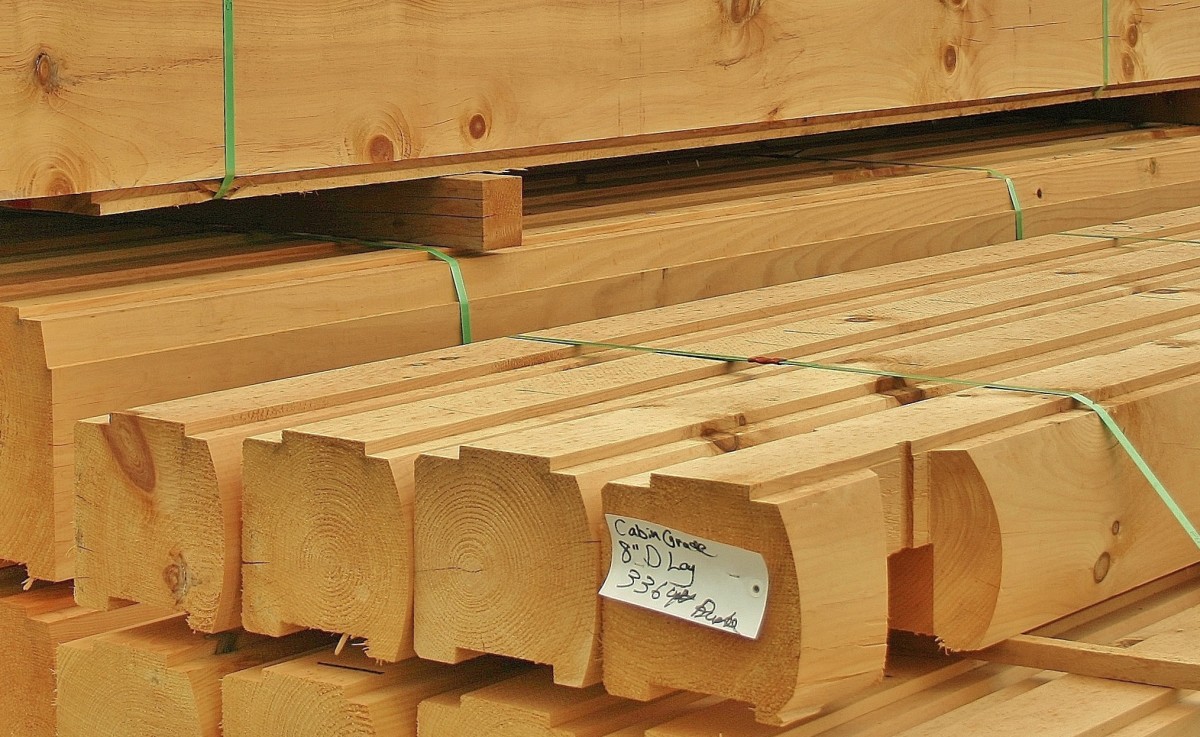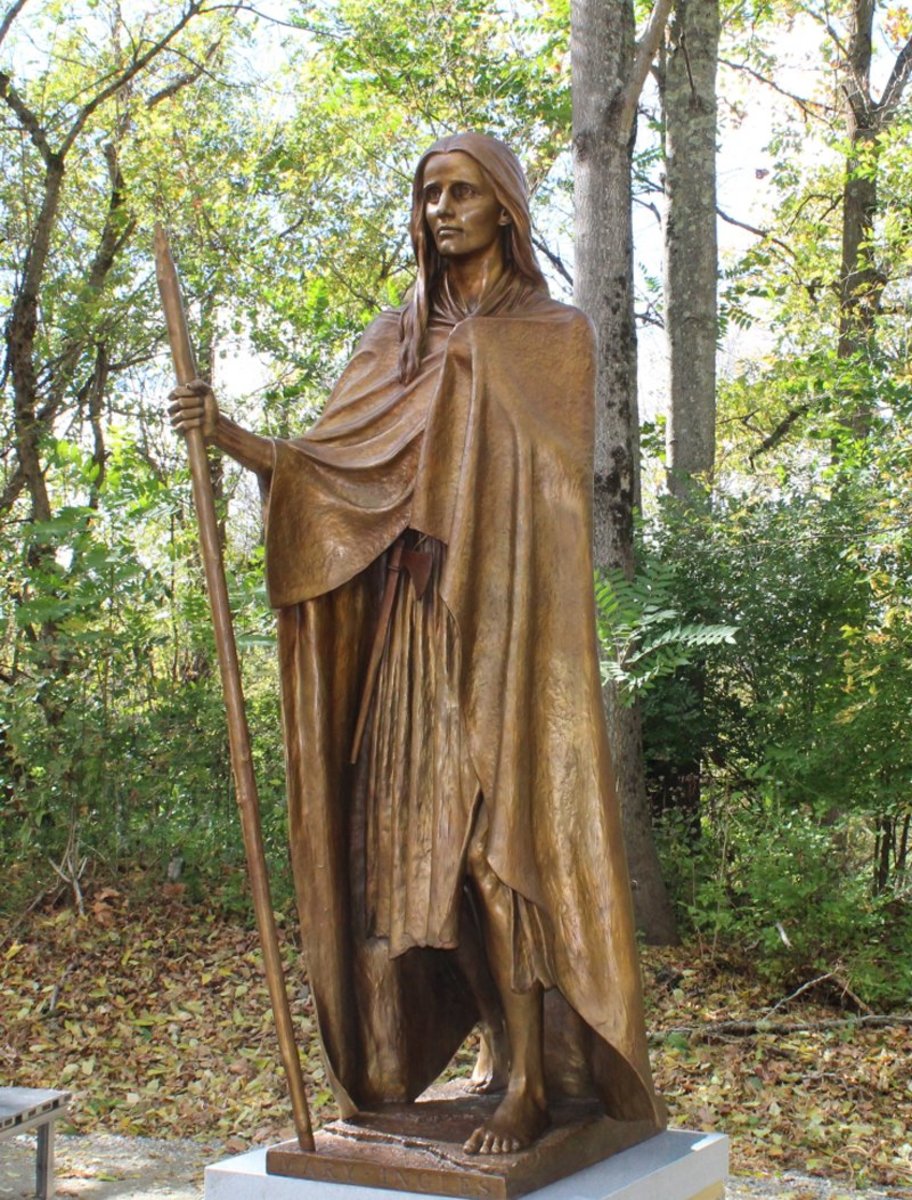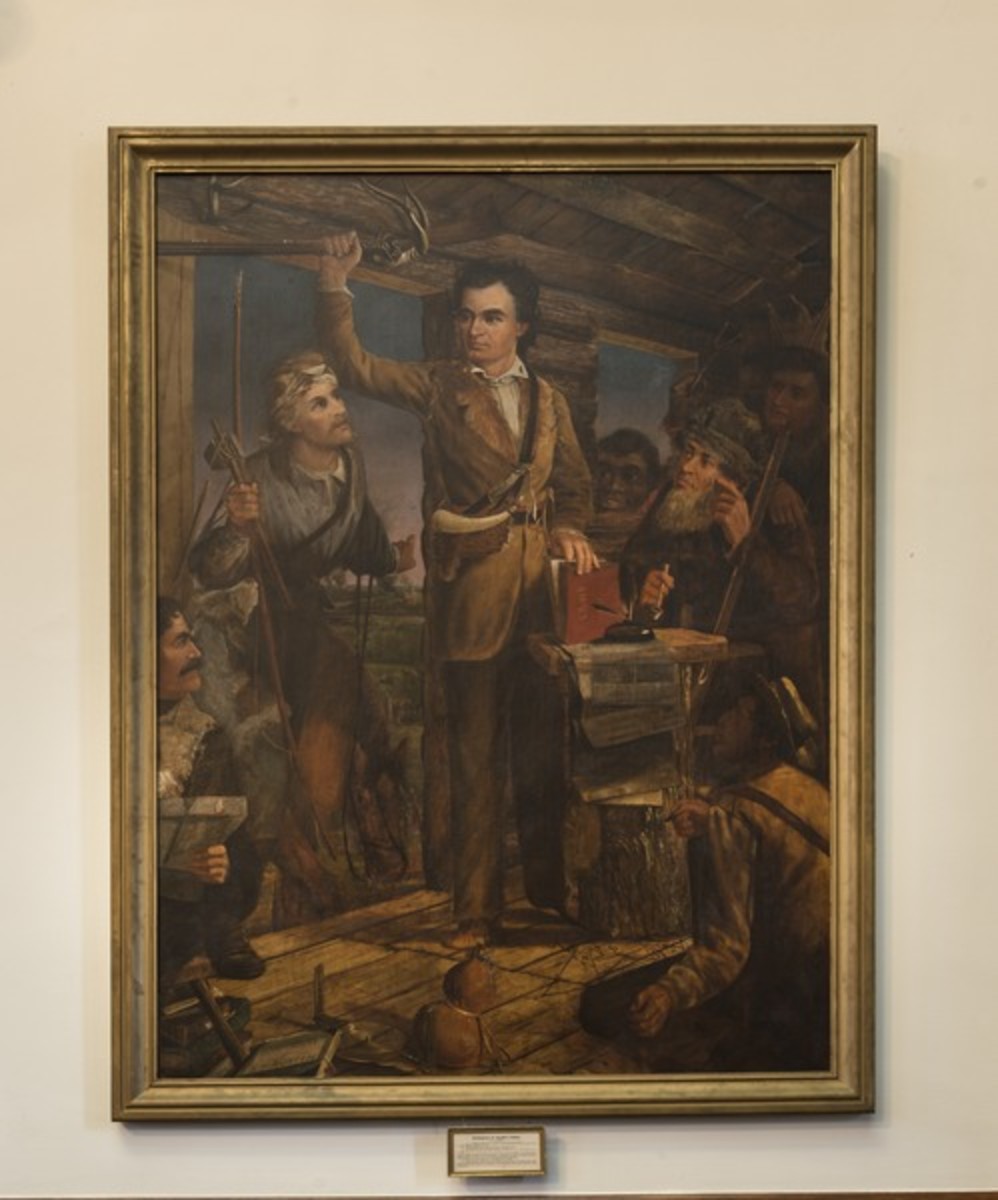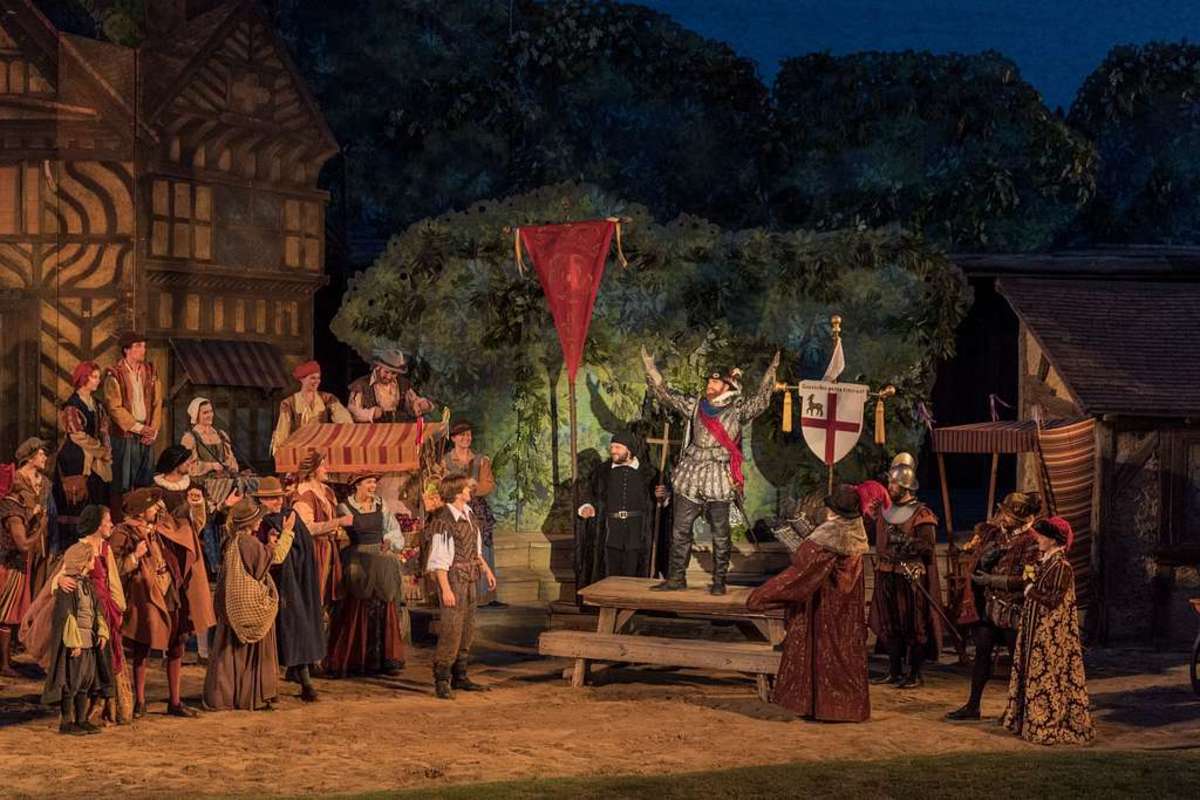- HubPages»
- Education and Science»
- History & Archaeology»
- History of the Americas
History of American Log Cabins

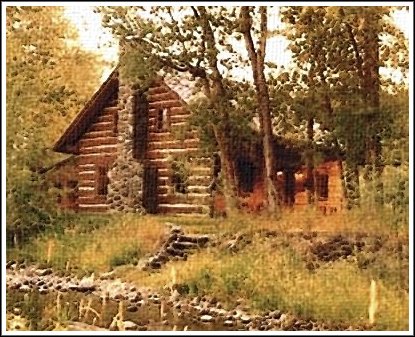
Contrary to popular myth, many colonial settlers to America during the early 1600s didn’t live in log cabins. Despite a number of books and articles on the history of log cabin construction in America, they were not the first type of shelter built by all American colonists.
They initially lived in wattle and daub huts like those used by neighboring Native Americans since they needed immediate shelter. Native Indians did not construct log cabins because their nomadic life style made them impractical. Log Cabins and wood frame homes would come later.
Historians believe the very first log cabins were built by Swedish immigrants who brought their knowledge of log cabin building with them when they settled in Delaware around 1638. Log structures are also known to have been constructed as temporary shelters by soldiers during the Revolutionary War.
However, after the American Revolution great numbers of settlers began pushing westward to places like Tennessee, Kentucky and the Northwest Territory where trees were abundant. Log cabin communities quickly sprang up across the country and became the typical dwelling place of the American backwoodsman.
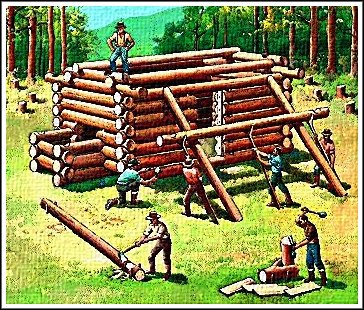
With prime building materials being trees and mud, log cabins offered quick shelter at little to no cost. Even the Scotch-Irish immigrants used to living in stone houses converted to building log cabins.
Early log cabins were simple in construction because the ax, adz, and auger were the only tools they had. A typical early log cabin was a small one-room affair with one or two doors hung by leather straps, a window or two and usually had a hard packed dirt or clay floor. However, occasionally floors were made with a stone foundation.
Trees were laboriously cut down by ax and logs were hewn to size and shape. The logs were fitted together by means of notches cut into each end or with wooden pegs. To keep out the wind and cold twigs, mud or clay was packed between the spaces. The process was called daubing.
Some of the earliest cabins were known to have thatched roofs but they eventually gave way to the more sturdy material of wooden boards which were laid in overlapping rows. Glass windows at the time were a luxury, so most were made of oiled paper which allowed light to filter through. An open fireplace, which was also used for cooking, provided a means to heat the room. Later, as they were able, some families added board siding as well as internal plaster.
The log cabin could be called the “original do-it-yourself project” in America. They were built mostly out of necessity. The Homestead Act of 1862 offered a 160 acre tract of land to "homesteaders" but required it be cultivated and have a home no less than ten by twelve feet in size and at least one glass window. The log cabin fit that bill.
The log cabin came to be a symbol of the American pioneer and frontier life. Perhaps the most famous is the one Abraham Lincoln was born and raised in. They came to represent hard work and the spirit of America. The image may have been fostered during the political campaign of 1840. Small log cabin replicas were used in parades to illustrate William Henry Harrison’s ties to the common frontiersman.
During the mid 1800s, fur traders, metal prospectors, farmers, ranchers and other settlers began to construct log buildings in the Rocky Mountains, the Northwest, California, and Alaska.
At the turn of the century log construction was still popular. During the 1930s and 40s, the Civilian Conservation Corps (CCC) furnished many Federal and State parks with constructed cabins, lean-tos, visitor centers and other log structures still in service today.
Logs continued to be a basic building material despite the introduction of wooden balloon frame construction, a method of wood construction used up until the mid-1950s. It was once popular when long lumber was plentiful, but has been mostly replaced by platform framing.
Today homes are built in varying styles and with numerous materials. Although modern day log cabins have amenities pioneers never dreamed about the public’s fascination with the log cabin design remains.

